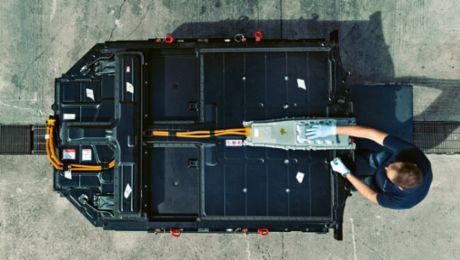The engineers at Porsche have devised a rear carrier solution and have already applied for a patent for the way it directly connects to the longitudinal profiles of the body construction. This unique type of assembly leads to outstanding stability, which Porsche tested as part of the overall vehicle test program of the Taycan Cross Turismo, including high-speed trials at Nardò.
The exceptionally low positioning of the Porsche Tequipment rear bicycle carrier minimizes aerodynamic drag, which benefits the car’s range. The assembly concept is very simple: remove two small panels from the rear apron, push in the support tubes and turn them 45 degrees. The carrier can then be put in place and unfolded in three steps. It’s simple – and it’s safe, too, because each step locks the previous one. If each action is not completed, the process cannot be continued. ‘Poka-yoke’ – a Japanese term – is what engineers call this fault-eliminating principle. Porsche also applies it to vehicle assembly.
Mounting the bikes to the carrier is easy too because, with a rail clearance of almost 15 minches (instead of the usual 7.8), handlebars and pedals do not get in each other's way. An optional roll-on rail and curved spacers are also available. The spacers enable perfect mounting of all frame geometries, and the limited clamping force of the brackets also protects more delicate carbon frames. The boot remains accessible when the carrier is mounted, and the carrier can be folded away – elegantly and gently, as it is hydraulically damped.
Mix of aluminium alloys
Thanks to the function- and weight-optimized mix of aluminium alloys, high-strength steel, and fiber-reinforced plastics, the design is around 44 pounds lighter than a conventional rear carrier and trailer coupling solution. The load capacity of 110 lbs is usually sufficient for a third bicycle, which can be accommodated by means of an extension kit. This extra can be ordered later.
Info
Text first published in the Porsche magazine Christophorus, No. 400.
Author: Johannes Winterhagen
Illustration: Design Hoch Drei
Copyright: The image and sound published here is copyright by Dr. Ing. h.c. F. Porsche AG, Germany or other individuals. It is not to be reproduced wholly or in part without prior written permission of Dr. Ing. h.c. F. Porsche AG. Please contact newsroom@porsche.com for further information.
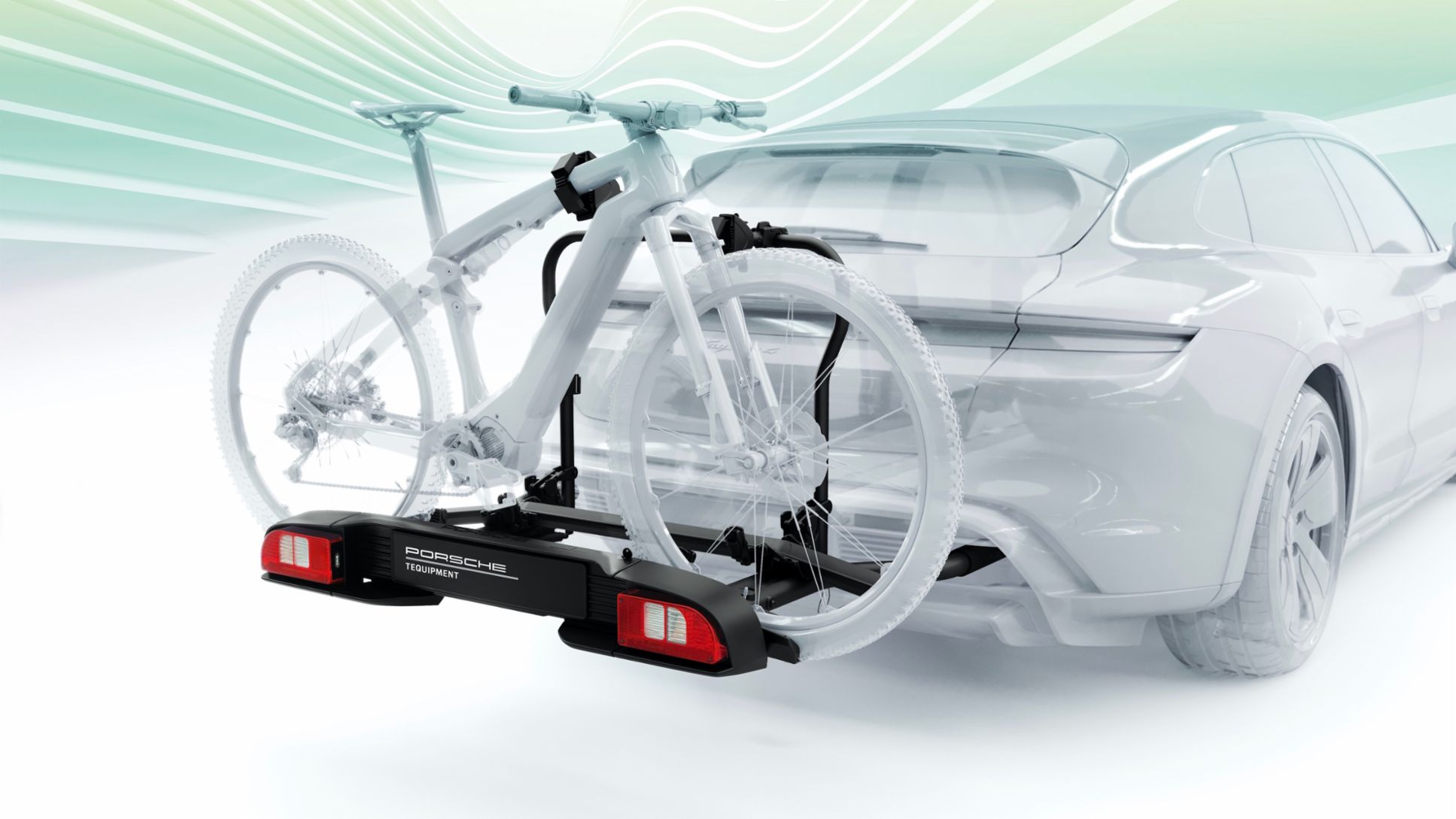
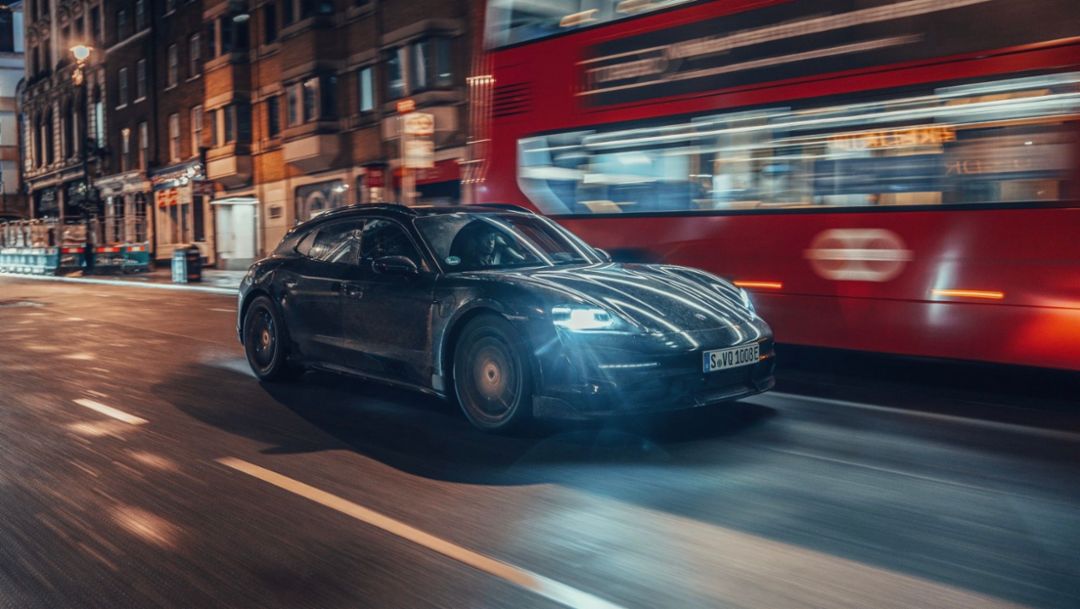
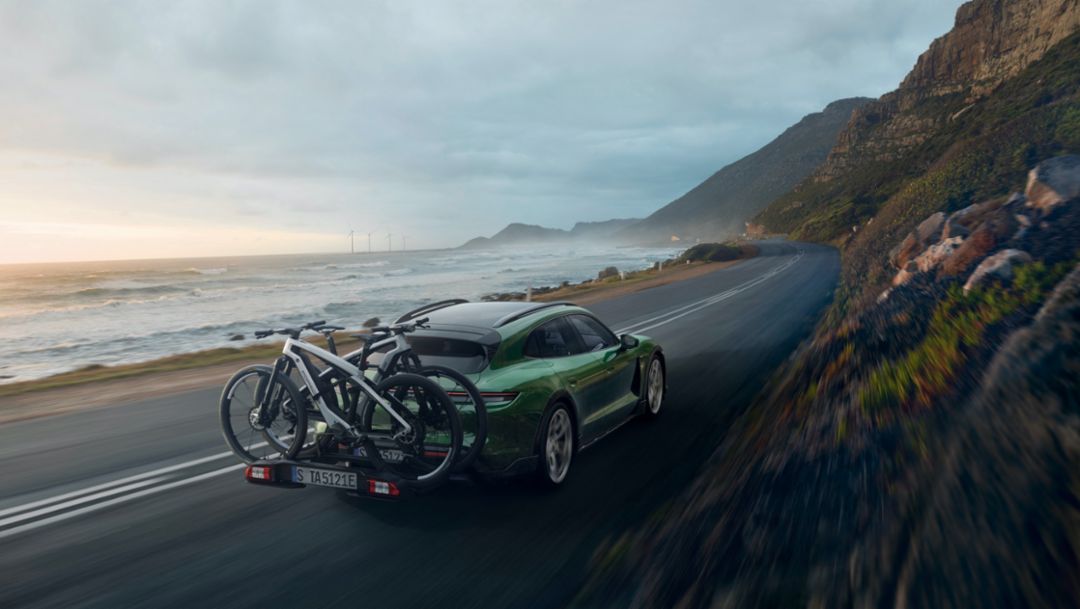

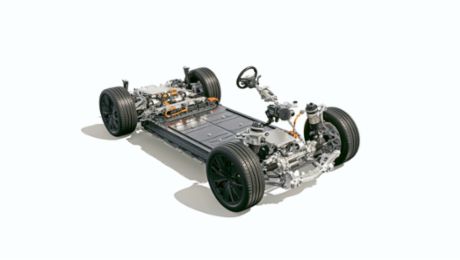.jpg)

